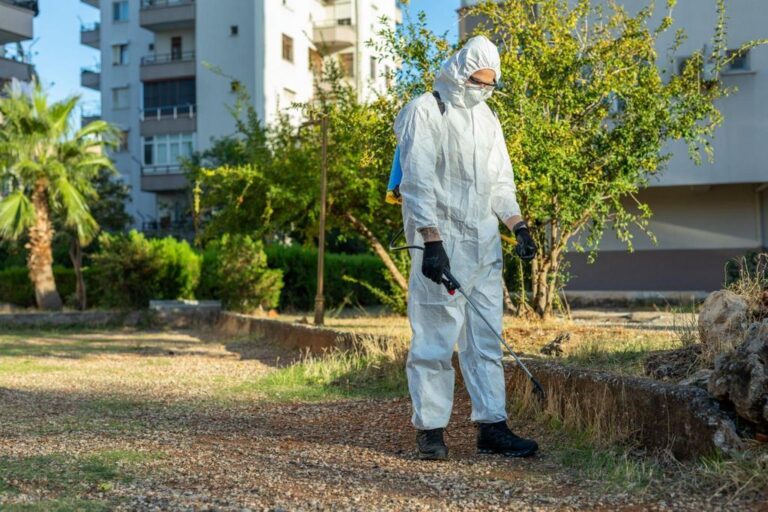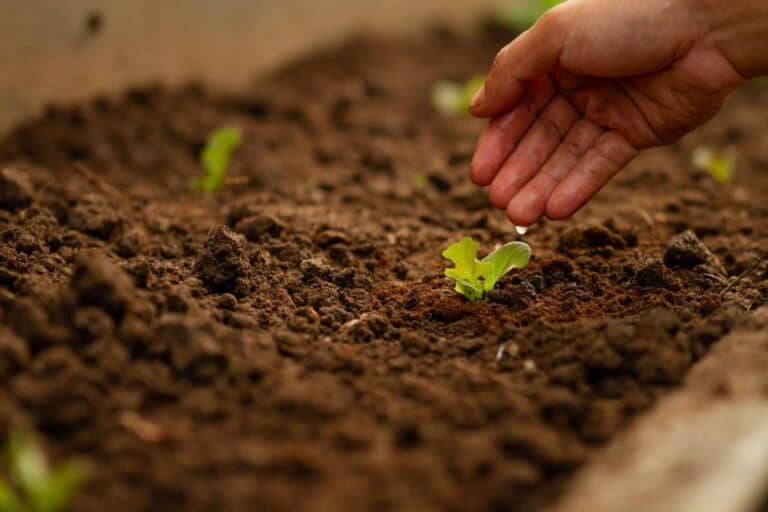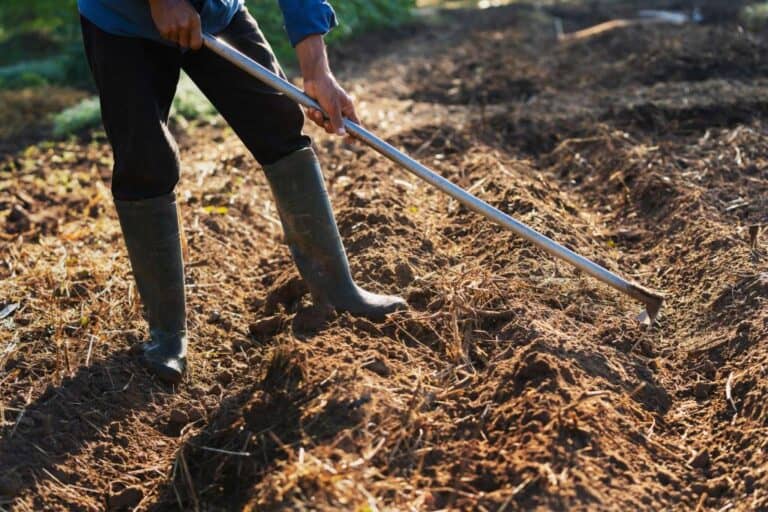What Does Baking Soda Do to Soil? Is It Good for Soil?
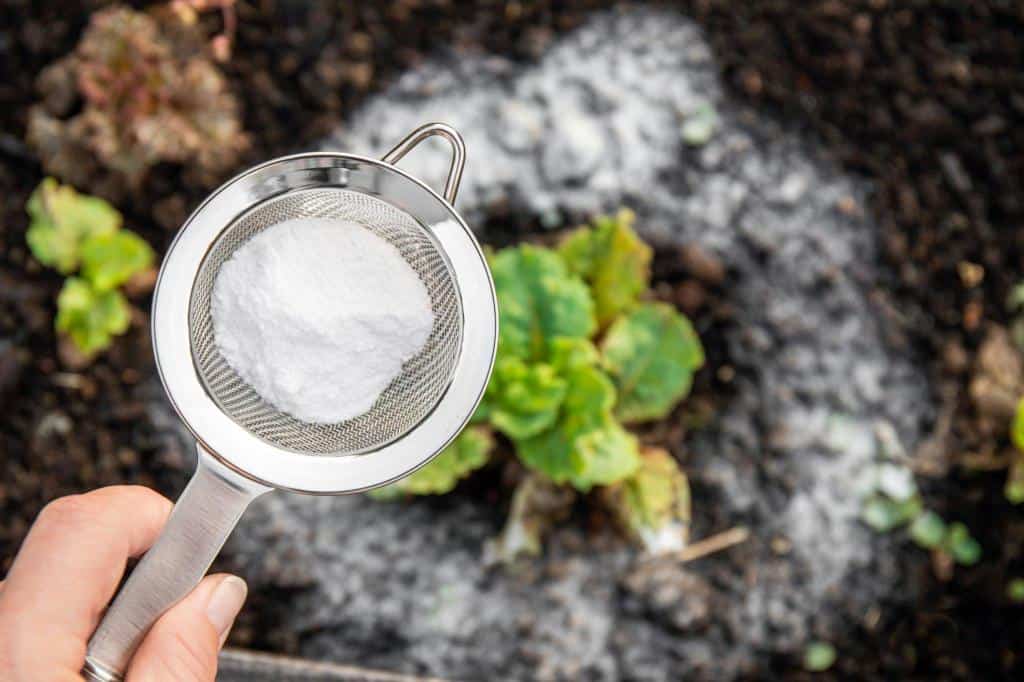
In the enchanting realm of gardening, where soil and seeds intertwine to create a vibrant tapestry of life, even the most unexpected ingredients can hold secrets to nurturing thriving landscapes. Among these, a humble pantry staple emerges – baking soda. But what, you might wonder, does baking soda do to soil? Could this unassuming powder truly be a guardian of fertility, whispering unseen wonders into the very earth we tread upon?
In the following exploration, we embark on a journey to uncover the mystique of baking soda’s interactions with soil. Together, we’ll unravel the science behind its alchemical influence, peering into the delicate balance of pH levels, the dance of nutrients, and the clandestine battles against fungal adversaries.
Along the way, we’ll discern whether this household hero is, in fact, a boon for our beloved greenscape or a subtler companion in our gardening escapades. So, ready your trowels and curiosity, for we are about to unearth the secrets of baking soda and its whispered dialogues with the soil beneath.
Introduction to Baking Soda in Soil
Baking soda, with its chemical formula NaHCO3, consists of sodium, hydrogen, carbon, and oxygen. Its versatility extends beyond the kitchen, finding applications in various contexts, including personal care and household cleaning. Recently, gardening enthusiasts have been exploring its potential impact on soil health.
While baking soda’s culinary prowess is widely acknowledged, its role as a versatile asset in other domains is equally notable. Embracing its potential impact on soil health, gardeners are delving into the world of baking soda, exploring how this unassuming substance might contribute to the vitality of their green havens.
As we navigate the fertile terrain of gardening with baking soda, its chemical composition emerges as a catalyst for growth and exploration.
The Chemistry Behind Baking Soda
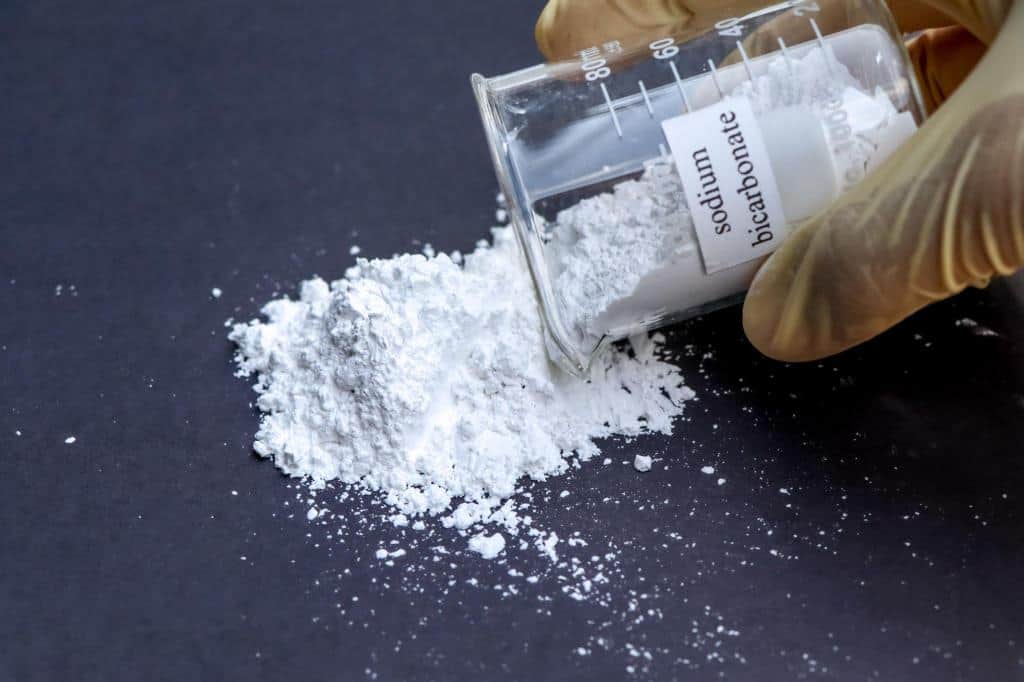
Before we explore its impact on soil health, let’s embark on a journey through the world of science to understand the enigmatic compound known as baking soda. Officially named sodium bicarbonate (NaHCO3), this unassuming white crystalline powder carries a wealth of chemical marvels within its structure.
While widely recognized for its role in baking and cleaning, baking soda’s versatility stretches beyond the realms of culinary and household applications, making its mark even in the domain of gardening.
At its heart, baking soda is a symphony of elements, harmoniously orchestrated. Comprising sodium ions, bicarbonate ions, and a unique pH buffering capacity, baking soda presents itself as more than a mere ingredient. This intricate composition empowers baking soda to interact dynamically with its surroundings. It’s not just a passive participant; it’s an active agent of change, capable of influencing the chemical dynamics of its environment.
The ability to release sodium ions and bicarbonate ions becomes a strategic tool, influencing the soil’s characteristics and fostering an environment conducive to plant growth. Moreover, its pH buffering capacity acts as a stabilizer, ensuring that the delicate balance of the soil’s acidity remains intact. In the garden’s grand symphony of growth, baking soda’s chemistry provides a harmonious undertone, enriching the narrative of cultivation.
Effects of Baking Soda on Soil
As we explore the impact of this versatile white crystalline powder, it becomes apparent that its role extends beyond the kitchen. Baking soda, also known as sodium bicarbonate (NaHCO3), introduces a unique chemical dynamic to the soil ecosystem, influencing factors that are fundamental to healthy plant growth.
1. pH Regulation
One of the primary impacts of baking soda on soil lies in its pH-altering abilities. Soil pH, a measure of acidity or alkalinity, influences nutrient availability to plants. Baking soda, when applied in controlled amounts, can help raise the pH level of acidic soils, making them more neutral. This can be particularly beneficial for plants that thrive in neutral to slightly alkaline conditions.
2. Nutrient Availability
The pH level of the soil significantly affects the availability of essential nutrients to plants. Baking soda’s pH-raising effect can enhance the solubility and accessibility of nutrients such as phosphorus, potassium, and calcium. As a result, plants growing in soil treated with baking soda may experience improved nutrient uptake, leading to healthier growth and potentially higher yields.
3. Managing Soil Salinity
Excessive soil salinity can hinder plant growth by impeding water uptake and causing ion imbalances. Baking soda’s sodium content, however, warrants caution when considering it for saline soils. While small amounts might help displace some harmful ions, excessive application could exacerbate the salinity issue due to the sodium content.
4. Controlling Fungal Diseases
Baking soda’s antifungal properties have led to its use as a natural remedy for plant diseases like powdery mildew. When applied as a spray, baking soda creates an environment less conducive to fungal growth by altering the leaf surface pH and disrupting fungal structures. This method can be effective for baking soda in preventing certain fungal infections, acting as a non-toxic alternative to chemical fungicides.
How to Use Baking Soda in the Garden
Using baking soda effectively in your garden requires careful consideration and proper application. Here’s how you can harness its potential:
1. Soil pH Adjustment
- Testing Soil pH: Before adding baking soda, determine your soil’s pH using a testing kit. This step ensures you make informed decisions about pH adjustments.
- Appropriate Amounts: Gradually add baking soda to your soil in small amounts. Mix it thoroughly and retest the pH periodically to avoid overcorrection.
2. Nutrient Enhancement
- Balanced Application: For nutrient enhancement, apply baking soda in moderation. Excessive use might lead to imbalances or interfere with the soil’s natural nutrient composition.
- Incorporation: Blend baking soda into the top layer of soil to facilitate its interaction with the root zone.
3. Fungal Disease Prevention
- Spray Solution: Create a baking soda spray by mixing a teaspoon of baking soda with a quart of water. Add a few drops of dish soap to enhance adhesion. Spray this solution on plant leaves, focusing on the undersides, where fungal spores often accumulate.
Is Baking Soda Safe for All Types of Soil?
As gardening enthusiasts seek sustainable solutions, understanding the nuances of baking soda’s interaction with various soil compositions becomes crucial.
Soil Type Considerations
Baking soda’s effect on soil is closely intertwined with the soil’s inherent characteristics. Sandy and loamy soils, with their superior heat retention and aeration properties, tend to be more conducive to incorporating baking soda. These soil types, often preferred by gardeners, align harmoniously with baking soda’s potential benefits.
The pH Factor
Yet, the compatibility of baking soda doesn’t merely hinge on soil type; pH levels also come into play. Baking soda’s ability to influence soil pH can be an advantage, but it’s imperative to consider the existing pH balance. Soils that lean towards alkaline may benefit from measured baking soda application, while those already alkaline might require cautious integration.
Alternatives To Baking Soda for Soil Improvement
While baking soda has its merits, a diverse range of alternatives exist for enriching soil health. As gardeners seek effective and eco-friendly solutions, these alternatives offer a spectrum of options to nurture their green spaces.
1. Epsom Salt (Magnesium Sulfate)
Ideal for bolstering magnesium levels in the soil. Magnesium is essential for chlorophyll production and overall plant vitality. Epsom salt can rectify magnesium deficiencies without impacting soil pH.
2. Coffee Grounds
As a natural source of nitrogen, coffee grounds can enhance soil fertility and structure. When used in moderation, they promote nutrient absorption and encourage earthworm activity, benefiting soil aeration.
3. Compost
Nature’s goldmine, compost enriches soil with nutrients, improves water retention, and enhances microbial activity. It’s a sustainable option that nourishes plants and fosters a thriving ecosystem.
4. Cover Crops
Growing cover crops like clover and legumes replenishes soil nutrients, prevents erosion, and promotes soil structure. These crops act as living mulch, supporting soil health during the off-season.
5. Green Manure
Similar to cover crops, green manure involves growing plants like alfalfa and rye specifically to be incorporated into the soil. As they decompose, they release nutrients and enhance soil structure.
Exploring these alternatives empowers gardeners to choose the approach that aligns best with their soil’s needs, cultivating a garden that flourishes with vitality and sustenance.
Conclusion
Baking soda can indeed have positive effects on soil when used judiciously. Its ability to regulate pH, enhance nutrient availability, and control certain fungal diseases showcases its potential as a natural soil amendment. However, moderation is key.
Excessive application can lead to unintended consequences, especially in terms of salinity. As with any gardening practice, it’s essential to observe your plants’ response and adjust your approach accordingly.
In the quest for a thriving garden, exploring natural solutions like baking soda can be both rewarding and environmentally friendly. By understanding the chemistry behind baking soda and its impact on soil, you can harness its benefits to create a nurturing environment for your plants. Remember, the key lies in balance, observation, and a touch of scientific understanding.
FAQs on Does Baking Soda Good for Soil
Can baking soda replace traditional soil amendments?
Baking soda serves specific purposes in soil, like pH adjustment and pest control, but it may not replace comprehensive soil amendments.
Can baking soda harm plants if overused?
Yes, excessive baking soda application can lead to pH imbalances, nutrient deficiencies, and harm to plants. Careful application is crucial.
Does baking soda persist in the soil for a long time?
Baking soda can be washed away by rainfall or irrigation over time. Its persistence depends on factors like soil type, weather, and application method.
Can I use baking soda to improve the pH of acidic soil?
Yes, baking soda can help raise the pH of acidic soil. Baking soda makes the soil more neutral for plants that prefer slightly alkaline conditions.
What is the recommended dosage of baking soda for soil application?
Start with a small amount, such as 1/4 cup per 100 square feet. Gradually increase while monitoring pH to avoid overcorrection.
Does baking soda help control fungal diseases in plants through soil application?
Baking soda’s antifungal properties can aid in disease control. However, it’s more commonly used as a foliar spray to prevent fungal infections.
How frequently should I apply baking soda to my garden soil?
Apply baking soda as needed based on soil pH tests. Regular monitoring allows you to maintain optimal pH levels.
Does baking soda help control fungal diseases in plants through soil application?
While baking soda has antifungal properties, its soil application isn’t a primary method for disease control. Foliar sprays are more effective.


